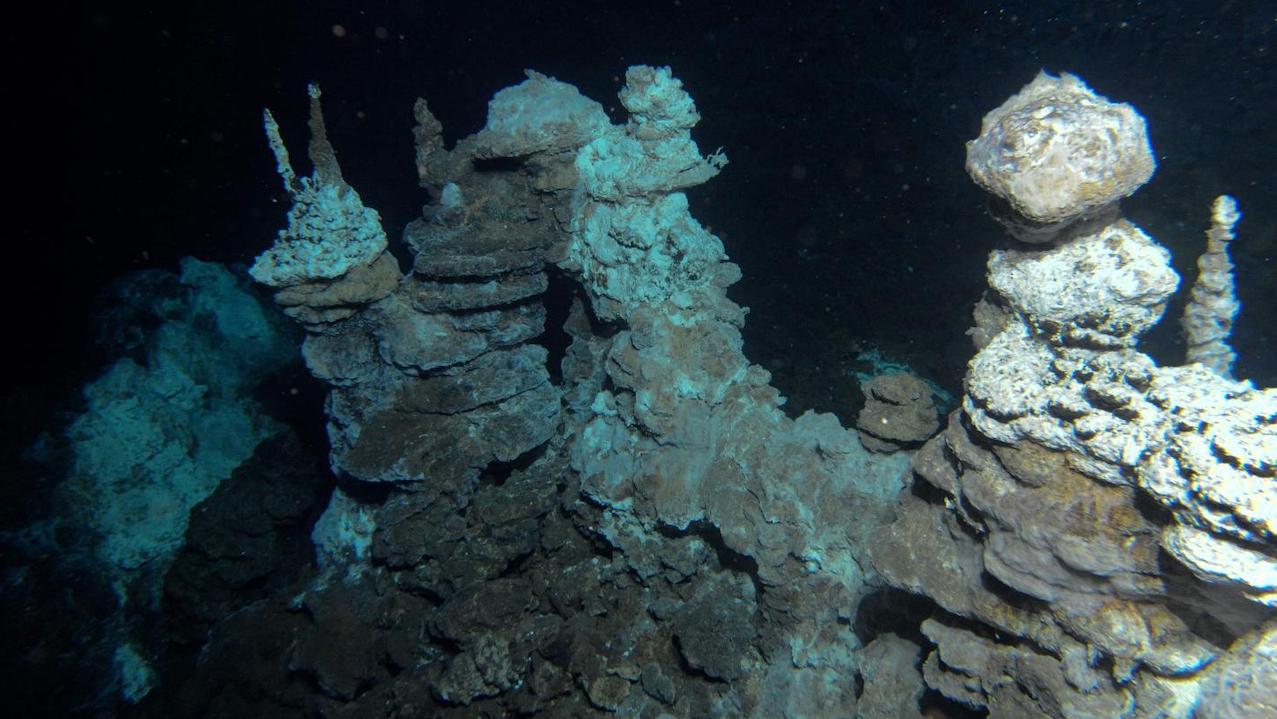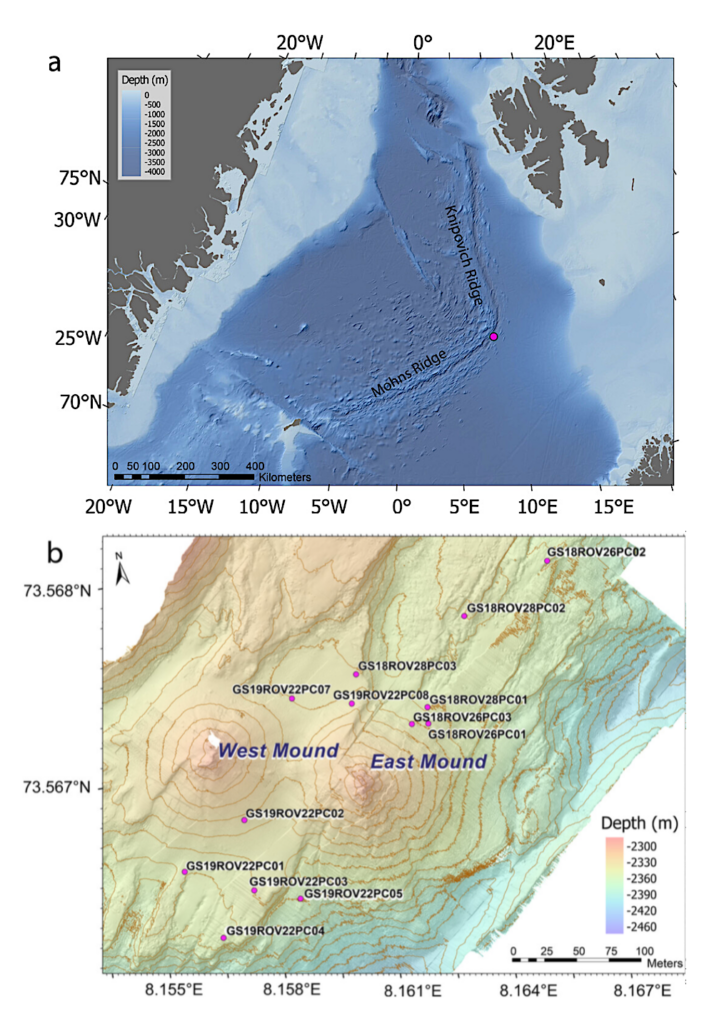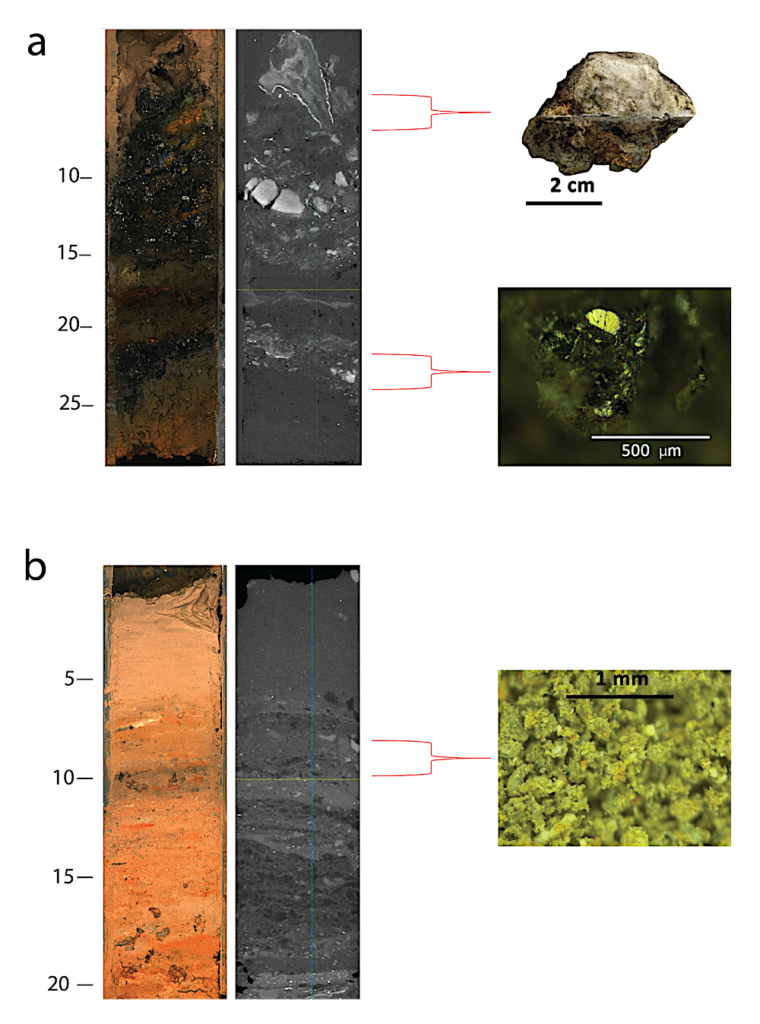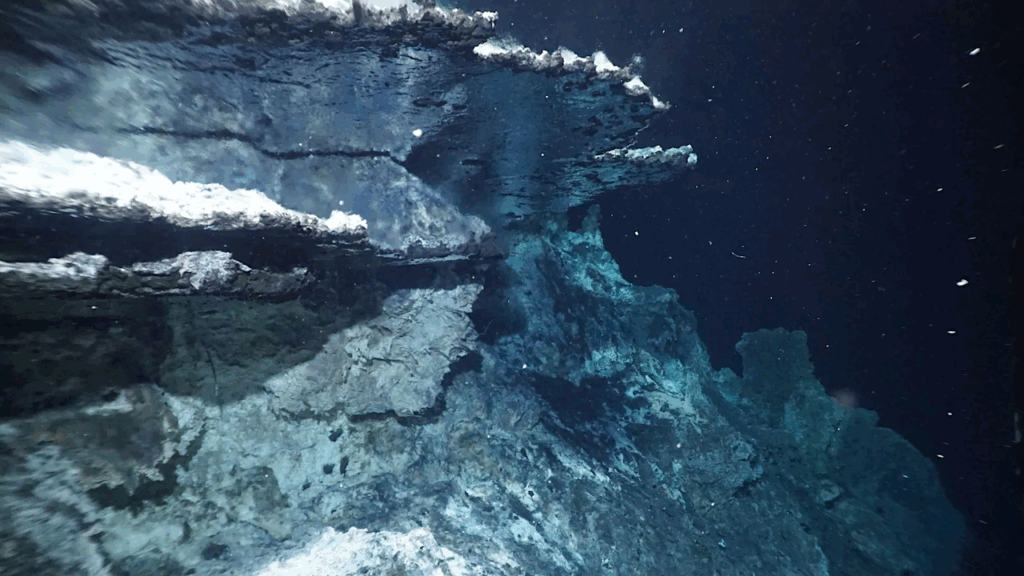Arctic Mid-Ocean Ridge Sediment Cores Shed Light On Past Hydrothermal Activity

In new research led by USGS, scientists analyzed cores collected from Loki’s Castle vent field, a high-temperature hydrothermal system deep beneath the Arctic Ocean northeast of Greenland, uncovering a unique sedimentary record that provides valuable insights into past hydrothermal activity on the ocean floor.
Deep-sea sediment cores can serve as time capsules, preserving a chronological history of the dynamic processes that shape Earth’s surface beneath the ocean. The deeper the sediment core, the further back in time scientists can explore. Hydrothermal vent sites are particularly intriguing, as the sediments there accumulate rapidly due to mineral formation and precipitation from what researchers refer to as “black smoke,” the high-temperature (around 300 degrees Celsius or 572 degrees Fahrenheit) hydrothermal fluid venting from the Earth’s crust.

(a) Map indicating the location of Loki’s Castle Vent Field (LCVF; red dot) near the intersection of the Mohns and Knipovich ridges and (b) the location of the push cores in relation to the east and west mounds. The base map in Figure 1a is from Esri and its licensors, copyright 2022.
The new research focused on sediment push cores collected near active hydrothermal vents by a remotely operated vehicle at depths of more than 2,300 meters (7,546 feet). The findings, published in the journal Geochemistry, Geophysics, Geosystems, reveal a fascinating transition in sediment composition over relatively short distances.
“We were expecting to find a consistent hydrothermal signature throughout the cores, with sedimentation largely occurring via water column plume fallout, volcanic ash deposition, and mass wasting of hydrothermal chimneys and mounds,” says Amy Gartman, USGS Research Geologist and lead author of the study. “However, our analyses unveiled a surprising shift from sediments dominated by hydrothermal material to those formed by background oceanic processes within just a few hundred meters.”
The study not only highlights the complexity of sedimentary processes at hydrothermal vent sites, but also underscores the importance of examining short-scale variations for a more comprehensive understanding of past geological events.
One of the most unexpected discoveries was the prevalence of talc, a magnesium silicate mineral, among the major hydrothermal minerals in the sediments. Traditionally, sulfide, sulfate, and oxide minerals have been documented as the primary hydrothermal minerals. The prevalence of talc raises questions about the geological processes at Loki’s Castle and challenges previous assumptions about the mineralogy of hydrothermal vent fields.
“Talc is not commonly associated with hydrothermal activity in deep-sea environments,” said Gartman. “This finding prompts us to reconsider our understanding of the mineralogical signatures of hydrothermal systems and their broader implications for Earth’s geological history.”

Photographs, CT scans and stereomicroscope images of cores ROV22PC01 (a) and ROV22PC04 (b) illustrating the discrimination between sediments which were accumulated dominantly through mass wasting (a) and sediments accumulated through plume fallout (b). The insets in (a) show a 5 cm piece of chimney which was removed from ROV22PC01, along with a well crystalline piece of pyrrhotite. The inset in (b) shows clumps of fine grained sediments that have accreted in a laminated manner.
Hydrothermal Plume Fallout, Mass Wasting, and Volcanic Eruptions Contribute to Sediments at Loki’s Castle Vent Field, Mohns Ridge, Geochemistry, Geophysics, Geosystems (open access)
Astrobiology, extremophile,








